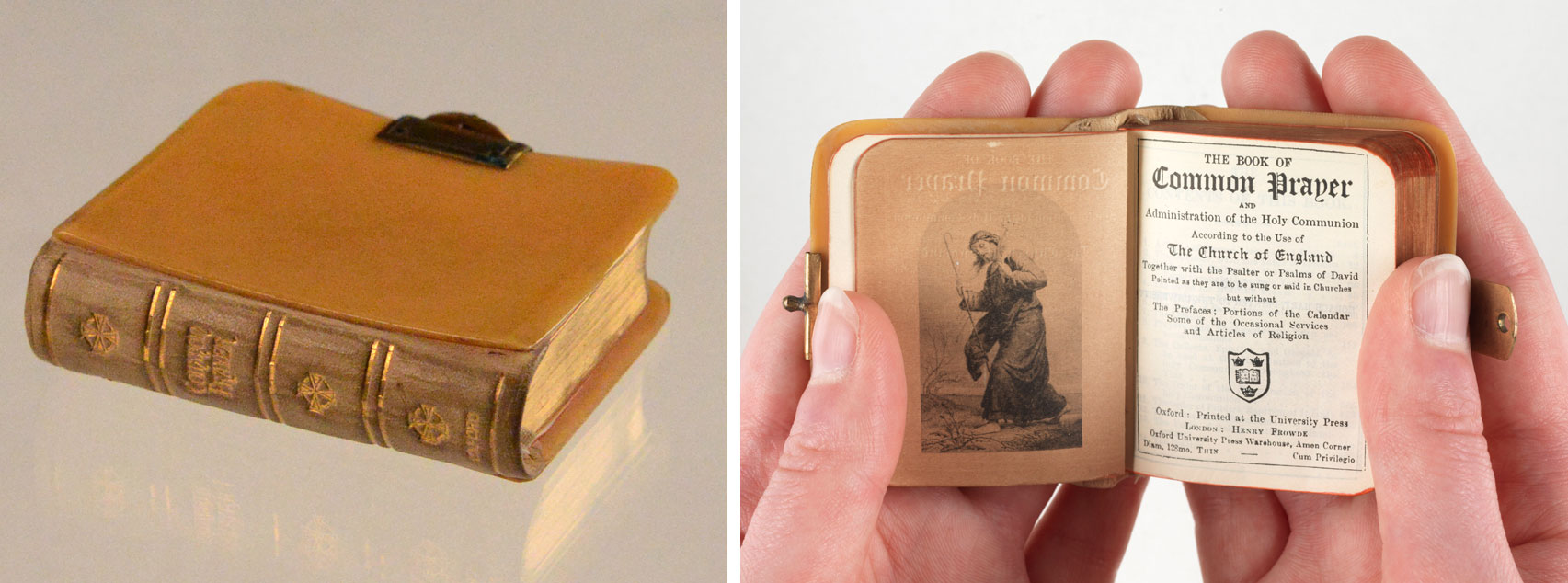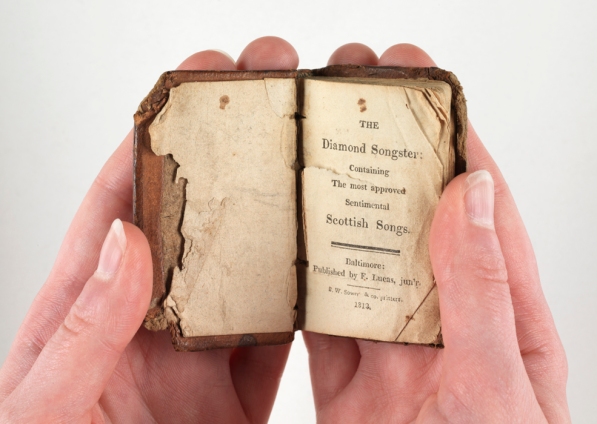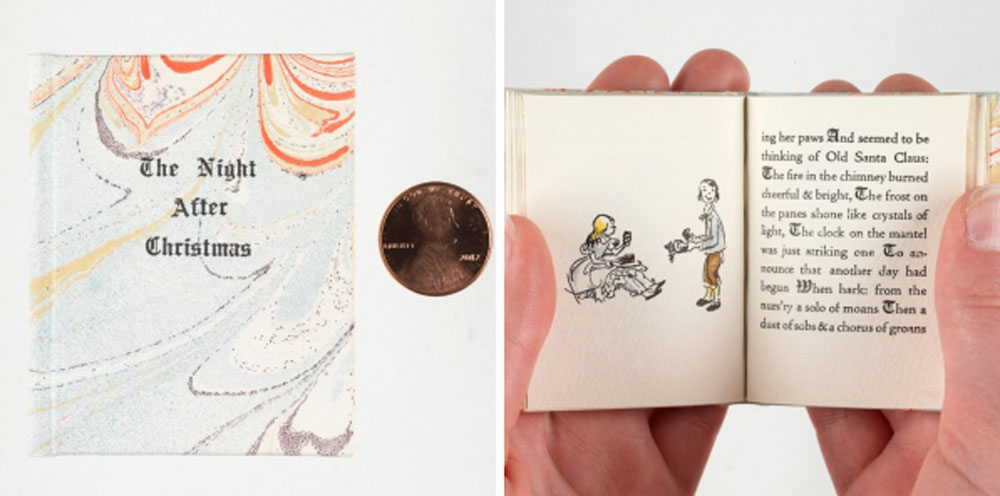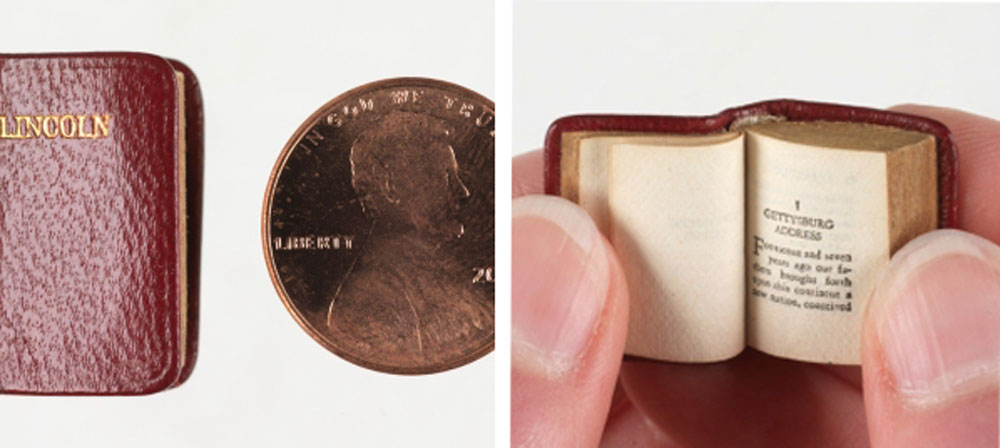Defined as no more than three inches in height or width, miniature books were first produced with convenience in mind. Early miniature books mainly consisted of moral texts with simple bindings, such as Bibles or books of common prayer, hymnals, and books on etiquette, that could be carried in coat pockets or small purses.
One example from the Virginia Museum of History & Culture’s collection is a canary-yellow Book of Common Prayer published around 1890 in England. The 688 pages inside the five-and-a-half-centimeter-tall book contain the entire Book of Psalms, a calendar of holy days, and prayers for a multitude of religious services.




